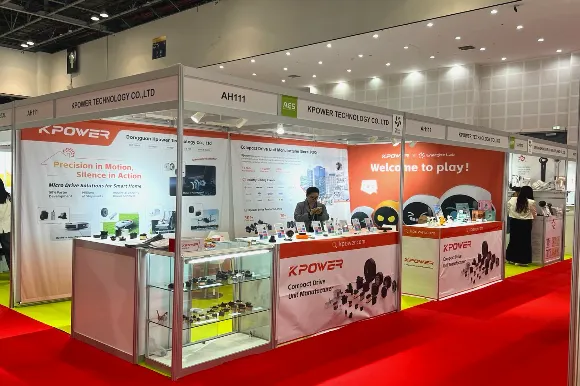In the realm of large-scale industrial machinery, turbines, heavy-duty compressors, and rotary equipment play pivotal roles in powering our modern world. Central to their operation is the turning gear system—a critical component that ensures equipment remains in optimal condition during start-up, shut-down, and maintenance procedures. But have you ever wondered what type of motor powers these turning gears? The answer lies in a carefully selected range of motors designed to handle high torque, variable speeds, and demanding operational environments.

Understanding Turning Gears: Their Purpose and Functionality
Before delving into motor types, it's essential to appreciate the importance of turning gear systems. When turbines—or any rotating machinery—are at rest or in transition phases, they are prone to bowing or uneven stress distribution if left stationary for long periods. Turning gears slowly rotate these heavy equipment, preventing deformation and aiding in inspection, maintenance, or calibration.
Typically, a turning gear connects to the main shaft via a gear train, engaging with the rotor or rotor assembly. During operation, the main rotor spins at high speeds, but during start-up or maintenance, the turning gear provides a controlled, gentle rotation—usually at a slow speed—ensuring mechanical integrity.
Criteria for Selecting Motors for Turning Gears
Given the delicate balance between torque, speed, reliability, and control, selecting the right motor becomes crucial. Some prerequisites include:
Ability to generate high torque at low speeds Precise speed regulation Reliability and durability under demanding conditions Compatibility with control systems
The motor's ability to deliver these attributes determines the efficiency, safety, and lifespan of the entire system.
Types of Motors Used in Turning Gear Systems
The spectrum of motors used in turning gear systems is diverse. Each type offers specific advantages suited to different operational needs and equipment sizes. Let’s explore the most common motor types:
1. DC Motors (Direct Current Motors)
Historically, DC motors have been heavily favored for their excellent starting torque, speed control, and responsiveness. Their simplicity in control and ability to deliver high torque at low speeds make them suitable for turning gear applications, especially in legacy systems.
Advantages:
Precise speed regulation High starting torque Smooth acceleration and deceleration
Disadvantages:
Maintenance-intensive (brushes and commutators wear out) Less suitable for environments where minimal maintenance is preferable
Many older installations still employ DC motors, but modern systems tend to favor other options for longevity and ease of operation.
2. Synchronous Motors
Synchronous motors operate at a constant speed synchronized with the power supply frequency. They are known for their excellent efficiency and precise speed control.
Advantages:
Precise speed control at a constant speed High efficiency and power factor Suitable for steady operations requiring uniform rotation
Disadvantages:
Complex starting procedures (may need additional equipment) Higher initial investment
In turning gear applications, synchronous motors can be used where maintaining a steady, precise low speed is necessary for long-term operation.
3. Induction (Asynchronous) Motors
Induction motors—particularly squirrel cage types—are the backbone of industrial power transmission due to their robustness, simplicity, and low cost.
Advantages:
Low maintenance and high durability Cost-effective and readily available Suitable for continuous operation
Disadvantages:
Less precise speed control unless paired with sophisticated drives Lower starting torque compared to DC motors
Modern induction motors equipped with variable frequency drives (VFDs) can offer variable speed control, making them increasingly popular in turning gear systems.
4. Variable Frequency Drive (VFD) Controlled Motors
Though technically a motor plus a control device, VFD-powered induction motors constitute a flexible solution. The VFD regulates the frequency and voltage supplied to the motor, enabling precise adjustments in rotation speed and torque.
Advantages:
Excellent speed control and energy efficiency Reduced mechanical stress during starting Ability to operate over a broad speed range
Disadvantages:
Higher initial setup cost Complexity in control systems and need for skilled maintenance
In recent years, the integration of VFDs with induction motors has revolutionized turning gear operation, allowing for smarter, more responsive control and energy savings.
Why Motor Choice Matters in Turning Gear Applications
Selecting an appropriate motor influences not just operational efficiency but also maintenance cycles, safety, and long-term costs. For example, a high-torque DC motor may be ideal initially but could become costly to maintain over years. Conversely, an induction motor with VFD offers scalable, energy-efficient operation, aligning with modern sustainability goals.
Furthermore, the environment in which turning gear motors operate can be demanding—extreme temperatures, exposure to moisture, dust, or corrosive atmospheres—dictating the need for robust, sealed, and reliable motor options.
Emerging Trends and Future Outlook
As industries push towards smarter, more sustainable solutions, the use of advanced motor technologies in turning gear systems is evolving. The integration of IoT and predictive maintenance allows for real-time monitoring of motor health, enabling timely interventions before failures occur.
Hybrid solutions combining different motor types, such as synchronous or asynchronous motors with advanced control electronics, are also being explored to optimize performance for specific operational parameters.
In essence, the future of turning gear motors is likely to be characterized by enhanced automation, greater efficiency, and an emphasis on durability—driven by technological innovation and an increasing need for sustainable industrial practices.
This first part sets the foundation for understanding the various motor types involved in turning gear systems. In the next segment, we will explore real-world applications, detailed case studies, maintenance considerations, and how emerging technologies will shape the future of these vital components.
Established in 2005, Kpower has been dedicated to a professional compact motion unit manufacturer, headquartered in Dongguan, Guangdong Province, China.




































